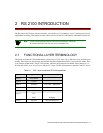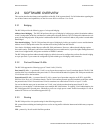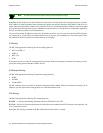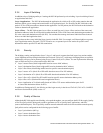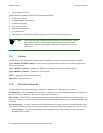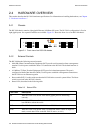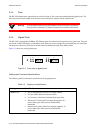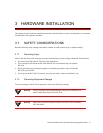
Riverstone Networks RS 2100 Switch Router Getting Started Guide 2-7
RS 2100 Introduction Software Overview
SSL persistence – a binding is determined by matching the source IP address and the virtual destination IP/port
address. Note that requests from any source socket with the client IP address are considered part of the same
session.
Sticky persistence – a binding is determined by matching the source and destination IP addresses only. This
allows all requests from a client to the same virtual address to be directed to the same load balancing server.
Virtual private network (VPN) persistence – for VPN traffic using Encapsulated Security Payload (ESP) mode
of IPSec, a binding is determined by matching the source and destination IP addresses in the secure key transfer
request to subsequent client requests.
IP persistence – Used for L3 persistence of load balancing sessions.
2.3.9 Management Platforms
You can manage the RS 2100 using the following management platforms:
Command Line Interface (CLI) – An Emacs editor-like interface that accepts typed commands and responds when
applicable with messages or tables. Use the CLI to perform the basic setup procedures described in Chapter 4,
"RS 2100 Initial Configuration."
SNMP MIBs and traps – The RS 2100 supports SNMP v1/v2 and many standard networking MIBs. The RS 2100’s
SNMP agent is accessed using integration software such as HP OpenView 5.x on Windows NT or Solaris 2.x, or
Aprisma SPECTRUM on Windows NT or Solaris 2.x. Setting up SNMP on the RS 2100 is described in Chapter 4,
"RS 2100 Initial Configuration."





